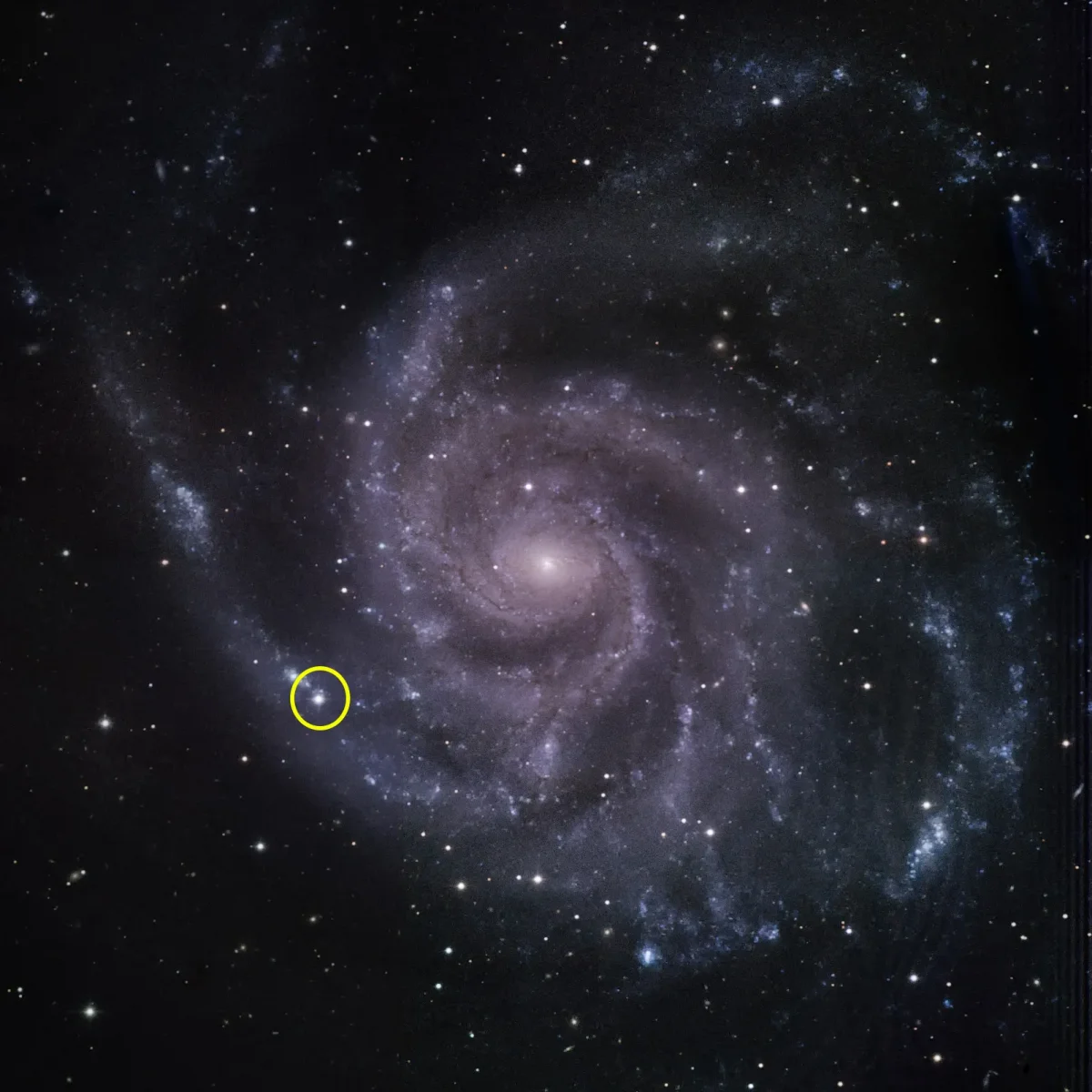After the closest supernova to Earth in nearly 10 years, the most sensitive space telescope for gamma astronomy has detected surprisingly few gamma rays originating there. This represents a puzzle for research, explains NASA, which operates the Fermi gamma-ray space telescope. Until now, it was assumed that about 10% of the energy in such stellar explosions flows into accelerated cosmic radiation, which in turn reveals itself only through gamma radiation. However, for the supernova called SN 2023ixf, measured data showed that only about one percent entered this process. This massive anomaly now needs to be explained and thus contribute further to the understanding of cosmic radiation.
advertisement
Research on the origin of cosmic rays
As the US Space Agency explainsThe analysis presented now is about what is called cosmic radiation. This is high-energy particle radiation, which consists largely of protons. Because of the electric charge, particles are deflected by magnetic fields on their way through the universe, so they cannot be returned to their source. Therefore, their source remains a mystery that remains to be solved more than 100 years after the discovery of cosmic rays. Supernovas have been the focus of this research for a long time; The resulting shock waves are said to accelerate particles so much that they produce cosmic rays.
When cosmic rays interact with matter, gamma rays are produced, and this is exactly where the Fermi Space Telescope comes into play. This should be able to detect gamma radiation in the supernova SN 2023ixf, which is due to this interaction of cosmic rays created there. The fact that this did not happen to the extent expected does not rule out the possibility that such explosions are one of the most important sources of cosmic rays, but we need to know more about the production process, says Guillem Martí-Devesa of the University of Trieste. , who led the analysis. At the same time, there are already theories about why Fermi found so little gamma radiation, for example due to the orientation of the exploded star.
SN 2023ixf was discovered on May 19, 2023 by Japanese amateur astronomer Koichi Itagaki. The supernova occurred about 21 million light-years away. It has been almost ten years since a supernova has been seen at such a small distance – by astronomical standards. The starburst could initially be observed using amateur technology. Another research group said a few days ago that it was possible that a black hole had been created during the explosion. Both works emphasize the enormous value that supernovas have for research; Its consequences will likely be monitored for decades to come. Working on gamma radiation It is scheduled to appear in the specialized journal Astronomy and Astrophysics.
(meh)

“Tv expert. Hardcore creator. Extreme music fan. Lifelong twitter geek. Certified travel enthusiast. Baconaholic. Pop culture nerd. Reader. Freelance student.”







More Stories
The square in front of the Opera House in Munich: this is how Max Joseph Platz is rebuilt
“Spiders on Mars” – Here's What's Behind It – News
This vitamin is missing from muscle pain